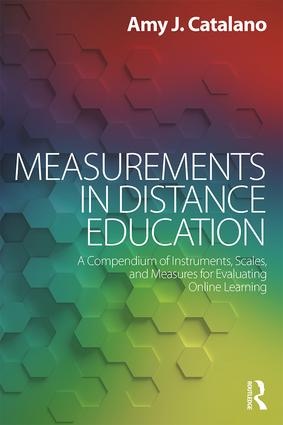evaluation
Select an item by clicking its checkbox
(An audio recording of this blog may be found here.) Classroom spaces are places of intimacy and influence. Teaching is a human-to-human encounter. Course planning typically focuses on the many ways the academic content shapes, forms, and informs students. In our planning, what we too often underestimate, and under plan ...
“...it’s easy if you try.” In fact, it is not easy for me to imagine no grading. But I’m trying, colleagues. I’m trying really hard. I’m not talking about being finished with this spring term’s grading, though that would be nice, too. When I say, “...
“I feel like I’m constantly grading now.” My colleague’s comment was offered as a lament over so much more assessment now that our school had transitioned to an online curriculum. That online courses required more grading was a surprise, and a mystery, to me at first too. Why ...
Persons new to the office of the Dean may soon discover the need to acquire a new set of skills to effectively carry out the job. Those skills range from supervision, pastoral care (yes, more than you imagined!), educational administrative planning, curriculum design and planning, political acumen, budgeting and financial ...

Measurements in Distance Education: A Compendium of Instruments, Scales, and Measures for Evaluating Online Learning
Date Reviewed: July 18, 2018
Arguably, due to suspicion, skepticism, and the entrenchment of classroom teaching practices, the most scrutinized, assessed, and evaluated pedagogy in theological schools in the last two decades has been online learning (“distance education”). Fortunately, the skepticism that fueled a demand for more rigorous evaluation of student learning in the online environment has yielded hard evidence that online learning is as effective, and sometimes more effective, than traditional classroom teaching.
The goal of this work by Catalano, an associate professor of teaching and learning at Hofstra University, is “to assist researchers of distance education, both novice and expert, in finding well-developed and value measures to suit their research questions” (2). The focus of the book is “on properly validated measures, thereby relieving the researcher from having to develop his or her own instrument” (2).
Catelano provides a concise guide to seventy selected assessment instruments (surveys, scales, and methods) that have been used to evaluate the effectiveness of online learning programs. The instruments can be applied to evaluate key metrics and pedagogical, as well as programmatic, elements such as: student engagement, student and faculty satisfaction, information retention, self-efficacy, student and teacher readiness, the online learning environment, cooperative learning, competencies for online learning, student attitudes, student retention and attrition, critical thinking, and achievement. Several instruments focus on specific pedagogical approaches such as constructivism and andragogy.
Five chapters provide nine categories of evaluations. Specifically, Chapter 1 provides eleven instruments on student engagement and satisfaction. Chapter 2 contains sixteen instruments on student readiness to learn and self-efficacy. Chapter 3 offers a selection of seventeen instruments focusing on the online teaching and learning environment. Chapter 4 provides twelve instruments on student learning behaviors. Chapter 5 contains five instruments to assess student achievement, retention, and attrition. Obviously, there are enough offerings in these chapters to meet just about any evaluation need an assessor may have. Each chapter includes a brief overview of each instrument covered. Each instrument entry includes a summary of the tool, a description of how the measure is used, and a description of its development and validity.
Some of the instruments described are complete tools (for example, a fully developed satisfaction questionnaire, a complete survey on student evaluation of online web-based instruction, and one on the online learning environment. Other instruments are described with information about their sources should an assessor wish to use them.
In the Introduction Catalano provides helpful background on the criteria for inclusion of the instruments selected for the compendium. The author describes the search process used in identifying the instruments, including applying the criteria of ensuring reliability and validity.
For those needing to continue to assess online learning through disciplined and rigorous evaluations, whether as part of formative curricular assessment or to satisfy accreditation requirements, Amy Catalano’s brief compendium of assessment instruments, scales, and approaches is a handy and accessible tool. Indeed, it should be on every evaluator’s desk.



